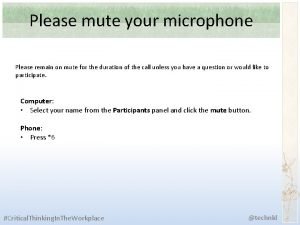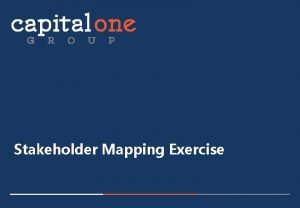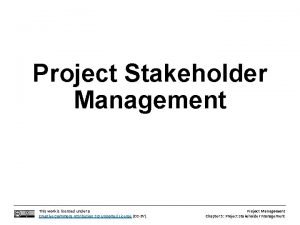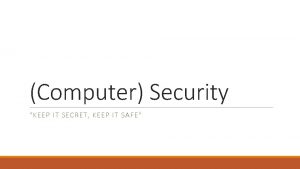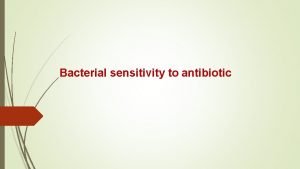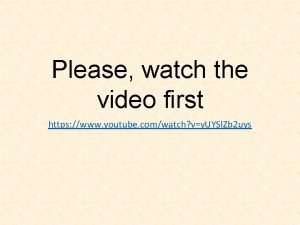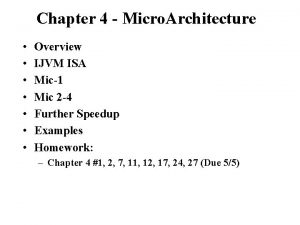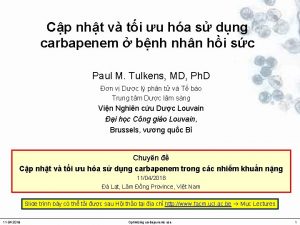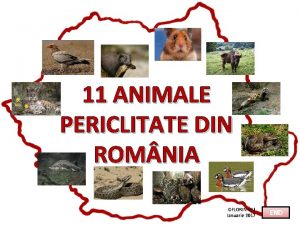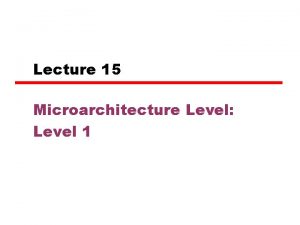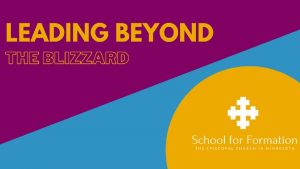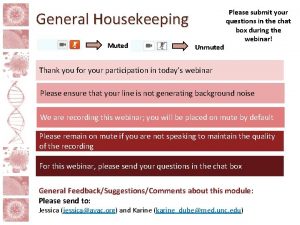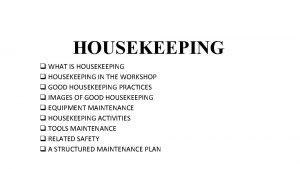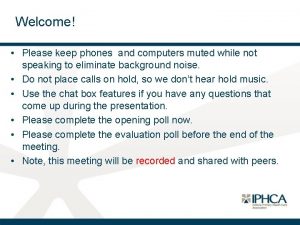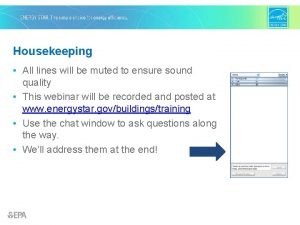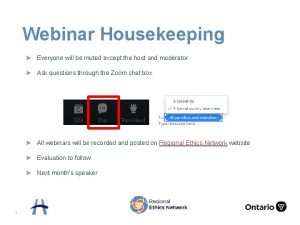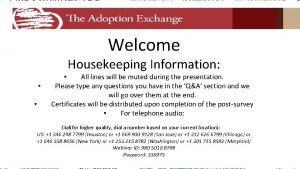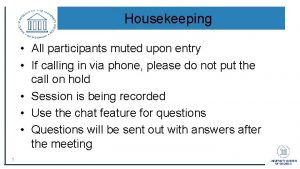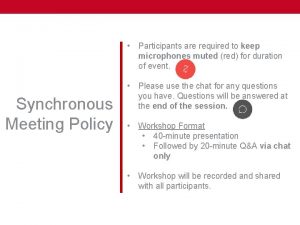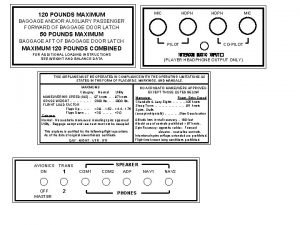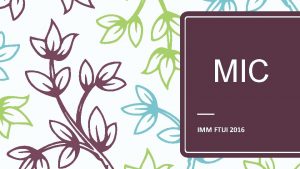Housekeeping Please keep your mic muted and video


























- Slides: 26

Housekeeping • Please keep your mic muted and video off • Please type any questions into the chat box, they will be answered at the end of the session. • If you joined by telephone: please send any questions from presenters to mnmonosky@mun. ca • The presentations will be recorded and uploaded to the AHIN website

Agenda Presentations • Travis Hedwig, University of Alaska Anchorage • Jeannette Waegemakers Schiff, University of Calgary Q&A period

At Home in the North Updates from Alaska Travis Hedwig Assistant Professor of Health Sciences Division of Population Health Sciences University of Alaska Anchorage

Acknowledgements • Dena'inaq ełnen'aq' gheshtnu ch'q'u yeshdu I live and work on the land of the Dena’ina translation: S. Shaginoff-Stuart, J. Isaac • Interdisciplinary nature of applied health research • Increased recognition of how we think about our circumpolar connections

Alaska • Originally home to Indigenous cultures from 20 distinct regions • The descendants of these original cultures are collectively called “Alaska Natives” • Alaska Natives today belong to over 200 federally -recognized tribes PHOTO: The University of Alaska Anchorage is built upon traditional Dena’ina Athabascan fishing and camping grounds.

• Largest state in USA • 4 th smallest population (~739, 800 people) • Smallest per capita population • Only 26/352 communities have >1, 000 people Utqiagvik • Over half the population lives in the three largest cities: • • Anchorage/Mat-Su (54%) Fairbanks (13. 5%) Juneau (4. 5%) Urban Alaska total (72%)

Rural Alaska • 92% of Alaska’s settlements are rural, with a population between 50 -1, 000 people • Some settlements are on the road system • Many are not • Rural settlements are often connected to larger “hub towns” within a region • Hubs have clinics, stores, government and Alaska Native offices, and some have college campuses Bethel is a hub town of 6, 370 people, providing services for 56 surrounding villages. • Spoke and wheel system

Data Sources • Alaska Coalition on Housing and Homelessness • https: //www. alaskahousing-homeless. org/data • Alaska Department of Health and Social Services • Alaska Coronavirus Response Hub • https: //coronavirus-response-alaska-dhss. hub. arcgis. com/

Houselessness in the throes of a global pandemic: Just a few problems • Dissonance with the messaging • “hunker down” where? • The “mask people” • Politicization of mask wearing/mandates • Mask warriors • Cultural solutions to? • All health and related systems of care under extreme pressure • Dwindling capacity, ICU shortage, hospital diversions • Shelters as “hotspots” for community transmission

Houselessness in the throes of a global pandemic: Some efforts underway • Extensive contact tracing efforts • Led by UAA, Division of Population Health Sciences • Contractual roles for Universities? • Series of “white papers” submitted to municipality of Anchorage • Housing, substance misuse, mental health, DV, congregate housing settings • Somewhat expanded emergency order? • Testing requirements for travel–honor system? • Mobile outreach • Combatting misinformation-–the biggest challenge of all?

Some questions for all of us • How can we translate knowledge to communities? • What needs to happen? • How can we learn from each other in our community of practice? • How has the coronavirus amplified existing vulnerabilities and what systems need to be in place to protect against this? Thank you!!! thhedwig@alaska. edu

Psychosocial Demands, Traumatic Stress and COVID responses Among Homeless Sector Workers Jeannette Waegemakers Schiff Ph. D. http: //www. free-powerpoint-templates-design. com

Why look at staff psychosocial needs? l Reports of pervasive burnout among workers l Lack of recognition of work-related mental health stresses. Traumatization may be an important dynamic l Concern over adequacy of staff training, supports, salaries and benefits, and reported high rates of turn-over. Very costly for organizations l COVID exposure and precautions may be adding significantly to this burden.

PRIOR FIVE STUDIES 2014 - 2019 Emergency shelters in Calgary Emergency shelters in Edmonton Domestic Violence Shelters – Calgary Homeless housing and support services Saint John, NB Housing and support programs serving homeless people - Calgary

Are there high rates of burnout? Is traumatic stress greater prevalent? Are staff adequately trained ? Are organizational supports seen as adequate? Given the pervasive effects of trauma in the lives of clients, does this impact staff through vicarious traumatization of direct traumatic stress? KEY QUESTIONS

WHAT DID WE MEASURE? Burnout and professional quality of life (PROQo. L) Traumatic stress symptoms (PCL) Life events (LEC) Organizational and supervisory supports Personal coping strategies Life experiences and supports for Indigenous staff

Traumatic Stress and Vicarious Traumatization 33% - 41% of staff report rates of traumatic stress 33 – 41% Why this difference 24% of staff report secondary traumatic stress (STS) 24%

BURNOUT AND PTSD

COVID Crisis Danger Opportunity

OPPORTUNITIE S FOR LEARNING FROM COVID 19 PANDEMIC Frontline workers are especially vulnerable The have critical roles in assuring safety of extremely vulnerable people They can not always work from home. Shelter staff always have direct contact PPE (Personal Protective Equipment) and psychosocial supports may not be sufficiently available Lack of flexibility in work conditions frequency of in-person client interactions

Lessons Learned from COVID-19 Pandemic Opportunities Threats Lack of recognition of vital role of frontline workers increase training and demand more relevant education Lack of training, and supervisory support B Lack of training in trauma-informed care A C D Provide multiple and diverse staff supports Implement Trauma-informed care at ALL levels of the organization

1 Survey staff to assess COVID-related stressors and supports 2 3 Interview senior managers to understand coping strategies that organizations have adopted Understand which supports may have the greatest impact 4 Determine to what extent stress leave and disability leave are influenced by COVID stressors. NEXT STEPS 22

Thank you

Q&A Period • Presenters: please turn your video on • Attendees: Please keep your mic muted and video off unless you are asking a question • Questions will be answered in the order that they were asked in the chat • Use the “raise hand” button in the Participants panel to respond to a speaker

WEBINAR DISCUSSION QUESTIONS ➤ What are the biggest challenges you see in your community or region with regards to housing, shelter and support needs under the pandemic? ➤ How are these needs currently being addressed? Where are the gaps? ➤ How can we use this partnership to advocate for sustainable, longterm strategies to address northern housing need and related supports?

2 ND AHIN COVID-19 AND NORTHERN HOUSING CALL is Friday, December 4 th ➤ Deadline for submission ➤ Two projects will be funded at $10, 000 each (to be used during the 2020 -2021 fiscal year). This funding is intended to support smallscale projects investigating partner-identified research questions broadly related to northern housing, homelessness supports and the COVID-19 pandemic ➤ Contact Christina Goldhar at christina. goldhar@mun. ca to receive the proposal form if you haven’t already
 Please mute your mic
Please mute your mic Muted group theory
Muted group theory Keep satisfied manage closely monitor keep informed
Keep satisfied manage closely monitor keep informed Stakeholder mapping
Stakeholder mapping Keep it secret keep it safe
Keep it secret keep it safe Nobody said anything raymond carver
Nobody said anything raymond carver Mic and mbc
Mic and mbc First video on youtube
First video on youtube Mic dejun sanatos cu ovaz in 6 variante
Mic dejun sanatos cu ovaz in 6 variante Uscg mic codes
Uscg mic codes La trame mic
La trame mic Duminica tomii sau pastele mic
Duminica tomii sau pastele mic Cand sunt mic atunci sunt mare
Cand sunt mic atunci sunt mare Microphone adalah
Microphone adalah Cel mai mic numar negativ pe 8 biti
Cel mai mic numar negativ pe 8 biti Mic architecture
Mic architecture Flocabulary shakespeare is hip hop
Flocabulary shakespeare is hip hop T/mic
T/mic Apakah yang dimaksud dengan menu pull down
Apakah yang dimaksud dengan menu pull down Mic pcr tube
Mic pcr tube T/mic
T/mic Dihorul patat
Dihorul patat Gura
Gura The layout of the microinstruction for mic-1
The layout of the microinstruction for mic-1 5. kuşak sefalosporinler
5. kuşak sefalosporinler Mic gate pass office
Mic gate pass office Temporal key
Temporal key
